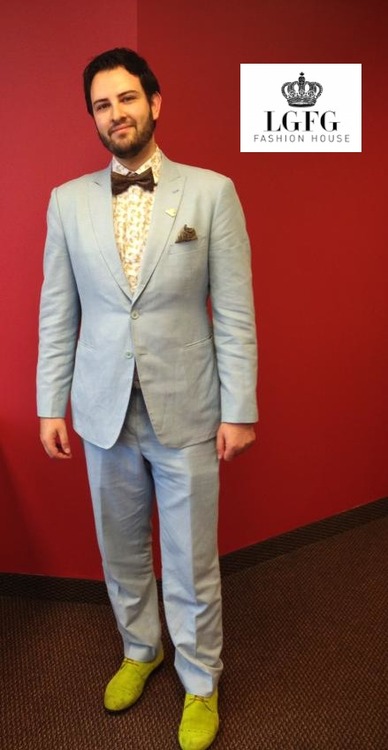Where to Draw the Line on Color
What are the basic rules of matching colors? Let’s first get the basics out of the way
First suit a man should own? Charcoal Solid. Second suit? Navy Solid, though not necessarily in that order. Third and fourth? Grey and Navy Stripe. Then black, brown, etc. For the time until you have a black suit, wearing your navy to a black tie is totally fine. Now, what about when you get outside the basic 4 or 5?
Let’s have some fun: A brown suit is back in style and is a killer. Brown communicates expertise, knowledge, trustworthiness – “what can brown do for you?” –UPS . The thing to keep in mind with brown, is you really don’t want to wear it with a white shirt because the white kills brown. Choose a cream or lavender shirt with your brown suit to get accused of knowing what you’re doing- blue is fine too, but then again, blue goes with anything.
In fact, it would be worth to cover which shirts to wear with your suits. Blue goes with anything. White goes with everything except your earth-tones (brown, olive) and stay away from check on check or stripe on stripe. Having “one solid of something” whether it’s the shirt or the suit makes sure your outfit is “idiot proof.”
What about some really fun suits? Bright colors are great for the summer- thus the phrase “summer suit.” A nice light-blue or light-gray sharkskin is perfect. Material is important too and in the summer you have a choice of wool, linen and silk. Silk suits give you the option of some great textures on a neon color like blue or purple, and even maroon is entering the trends. In the winter, stick with traditional darker colors for suits.

As far as ties go, the key rule of thumb is don’t match patters (stripes on stripes- again like suits and shirts, don’t do it) but try to pick a tie where there’s some color match from shirt to tie- specifically, where one’s primary color matches the other’s secondary. For example, if you have a blue shirt, pick a tie that has some blue in it, but isn’t primarily blue. The reverse works as well, if you have a solid red tie, for example, pick a shirt that has red in it, but red isn’t the primary color (for example a white with red stripe).
Of course don’t forget to ask your clothier for advise; that’s why professionals exist, after all.






